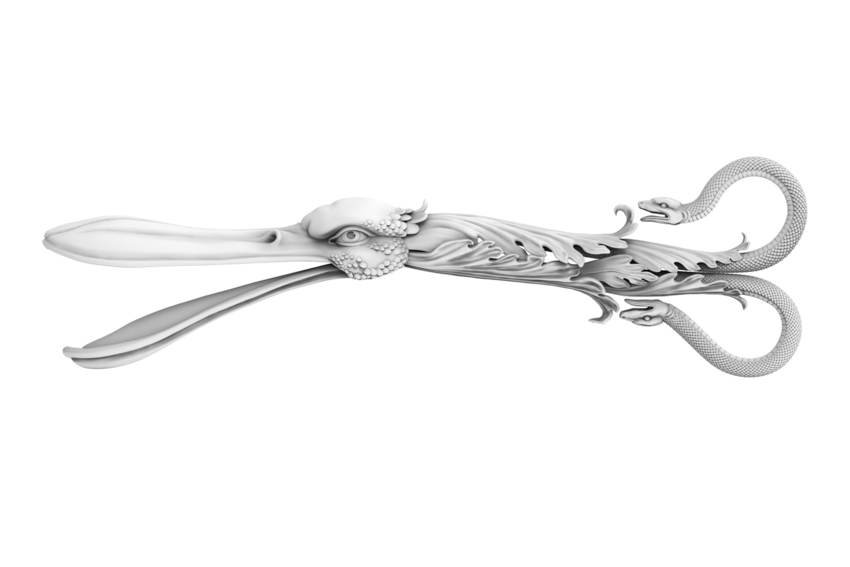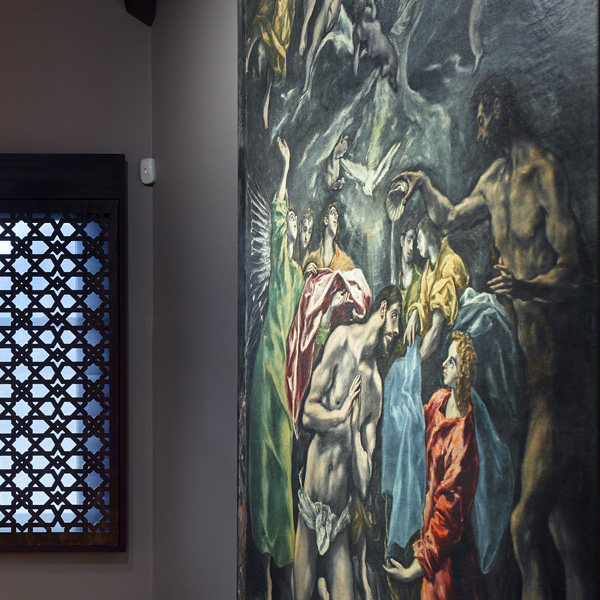© Oscar Parasiego for Factum Foundation
Detailed exchanges of letters document Ercole and Ferrante Gonzaga’s interest in silverware, and many pieces of their collections were designed by Giulio Romano, who was the official artist at the Gonzaga’s court. The artist had no training in metalworking, and therefore several of his designs, while looking almost effortless on paper, were very complex and often challenging to produce.
None of these objects have survived today, and Factum Foundation, in collaboration with Factum Arte’s 3D team, made physical recreations inspired by a selection of drawings:
- A vase all’antica
- A pair of tongs
- A salt cellar
- An ewer in the shape of a sea monster
- An ewer made for Ercole Gonzaga
The intricate designs were rematerialised as elaborate 3D models by Irene Gaumé, Jordi Garcia and Manuel Franquelo at Factum Arte, before being 3D printed in sections and cast in a variety of materials depending on the size and complexity of the details.

Installation view ‘Giulio Romano. La forza delle cose’, Palazzo Te di Mantova, foto Gian Maria Pontiroli © Fondazione Palazzo Te
All’antica vase
silver-plated brass
528 x 400 x 350 mm
This design appears on the walls of the Chamber of Cupid and Psyche, and in an etching within the collection of the Victoria & Albert Museum (published by Agostino Veneziano in 1531). The definition of all’antica (‘in the manner of the ancients’) refers to a design in the style and principles of the classical past.
The vase was rematerialised in brass at Fademesa Foundry, and gilded in silver at Factum Arte.

Detail of the vase all’antica within the frescoes of the Chamber of Cupid and Psyche. Foto: Gianmaria Pontiroli © Fondazione Palazzo Te
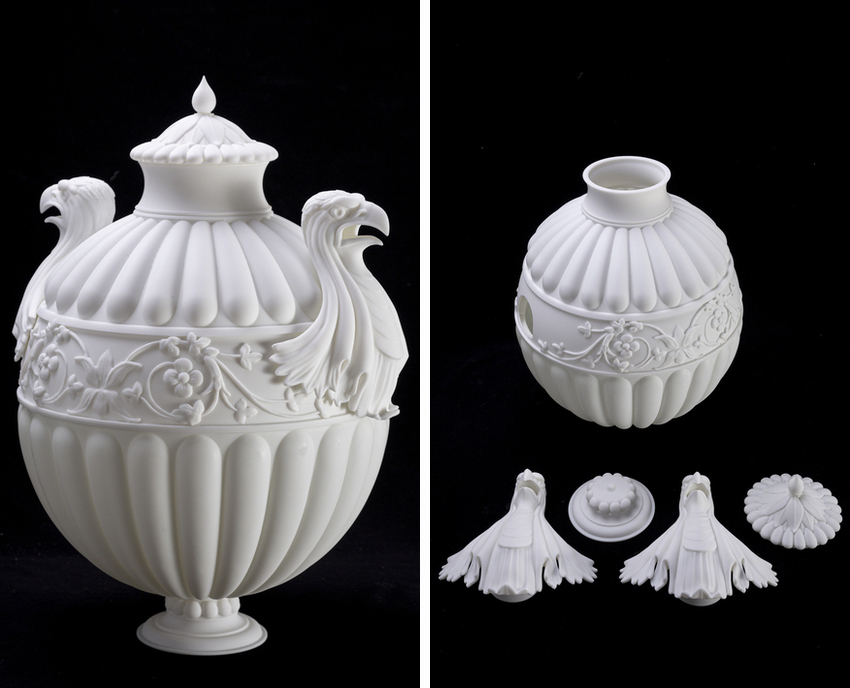
3D print of the All’antica vase and its disassembled sections © Factum Foundation
Pair of tongs
pewter
70 x 260 mm
This pair of tableware tongs was one of the most complex designs to conceive in 3D as the team also needed to focus on its functionality. After trying various configurations for the scale of the object and the positioning of the hidden adjusting screw, each section was cast in pewter and assembled at Calser Peltrex 98, in Badajoz. Pewter is a malleable alloy of tin, antimony and copper that has been widely used for tableware since the Egyptians, and was often silver-plated.

Installation view ‘Giulio Romano. La forza delle cose’, Palazzo Te di Mantova, foto Gian Maria Pontiroli © Fondazione Palazzo Te
Salt cellar
silver-plated brass
188 x 225 x 225 mm
The elaborate design, featuring small goats and an ornate lid, was made at Esfinge Foundry in Madrid.

Giulio Romano, Progetto per saliera ca. 1537 – 1546, Penna e inchiostro bruno, acquerellato, pietra nera, stilo, 181 x 219 mm Londra, The Courtauld © The Courtauld / Bridgeman Images
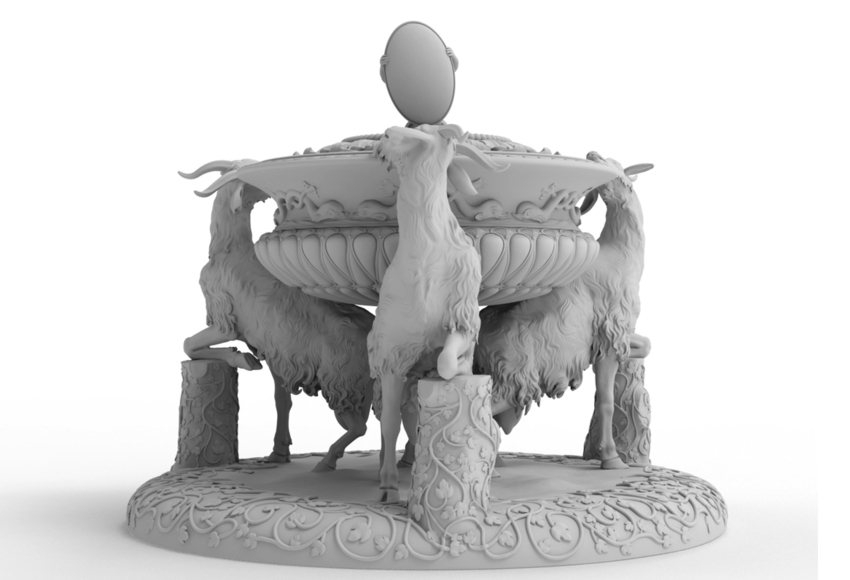
Render of the Salt cellar © Factum Arte

Installation view ‘Giulio Romano. La forza delle cose’, Palazzo Te di Mantova, foto Gian Maria Pontiroli © Fondazione Palazzo Te
Ewer in the shape of a sea monster
silver-plated brass and pewter
310 x 222 x 136 mm
The several sections of the ewer were made in silver-plated brass at Fademesa Foundry in Madrid, with the finer details cast in pewter at Calser Peltrex 98.
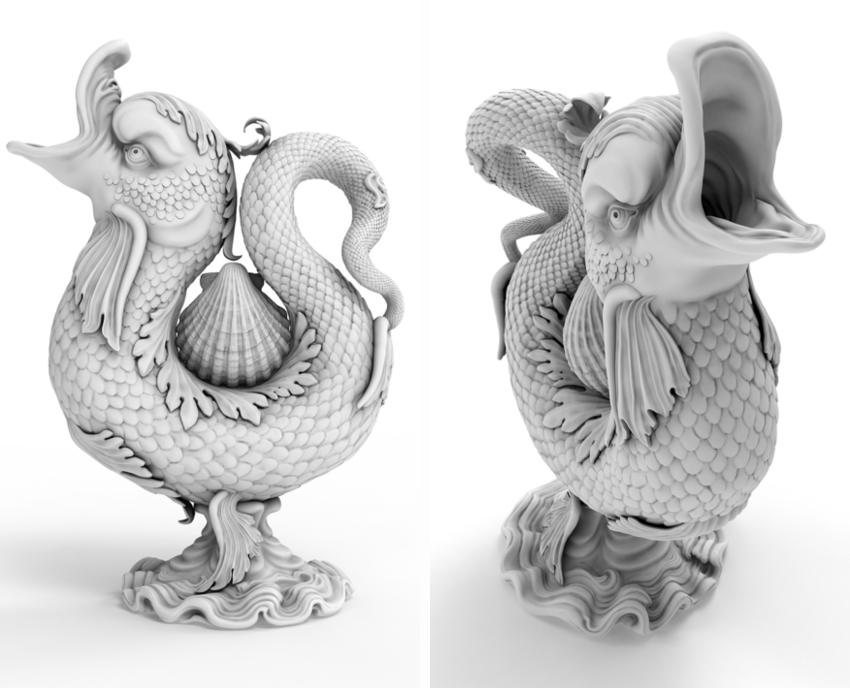
3D model of the ewer in the shape of a sea monster © Factum Arte

Installation view ‘Giulio Romano. La forza delle cose’, Palazzo Te di Mantova, foto Gian Maria Pontiroli © Fondazione Palazzo Te
Ewer for Ercole Gonzaga
silver-plated brass and pewter
400 x 165.25 x 198 mm

Render of the Ewer for Ercole Gonzaga © Factum Arte
Today we accept a division between artist and craftsman. The conceiving of something is valued above the making of it. The artist is king. Benvenuto Cellini was a goldsmith. Despite Giulio Romano having had no training as a metalworker, he oversaw the production of his designs, often frustrating the craftsmen.
Romano’s voice is not here to supplement the drawings or resolve the complexities in transforming a graphic notation into an object. His salt cellars, ewers and sculptures were to feel effortless and fluid, despite a profusion of flora, fauna, human and mythological forms in a world formed of gold, silver, shells and coral. They celebrate man’s ability to transform natural materials into unnatural artefacts made with great skill.
The process of modelling in clay or wax and working in silver and gold has been reinvented in today’s world of digital mediation where voxels (‘volumetric pixels’) exist in virtual space. The haptic working of physical materials now happens on screen. It requires different skills and methods but the same sensibilities. Z Brush, Autodesk, Maya and other softwares build forms, while Materialise Magics converts the virtual back to physical. Stereo-lithographic printing uses light to create form from a liquid resin. The Birth of Venus, where she emerges fully formed from the waves, is a perfect metaphor for additive technologies where complete objects emerge from liquids.
The merging of craft skills and technologies now takes different forms, but making still depends on an intimacy with the behaviour of the physical world. Once formed, analysed and approved, models are broken into elements that can be cast. From here, the process resembles that of the gold or silversmith of the sixteenth century.
— Adam Lowe, founder of Factum Foundation







